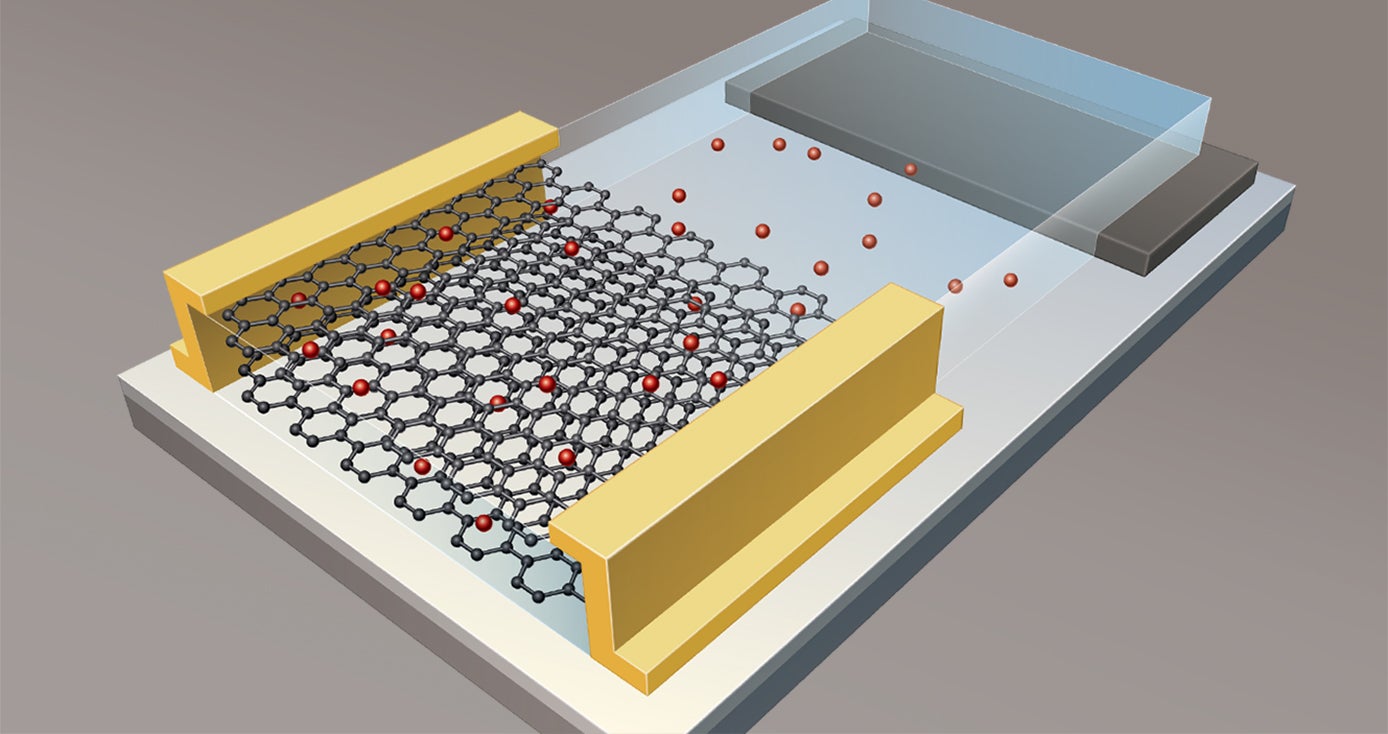
Subscribe to Pittwire Today
Get the most interesting and important stories from the University of Pittsburgh.Engineers Create Artificial Synapse to Help Computers ‘Think’ Like Humans
Computers are programmed to follow commands; they don’t “think” like human brains do to solve complex problems or complete work. But a team of University of Pittsburgh researchers are beginning to answer the question, “What if they could?”
Researchers in Pitt’s Swanson School of Engineering have created an artificial synapse — a junction that allows brain cells to pass along information — that mimics the way the human brain completes complex tasks, with the intention of connecting the digital and physical worlds.
“As humans learn new things, the strength of the connection between synapses has the chance to increase or decrease. This is important for memory and cognitive functions,” said Feng Xiong, assistant professor of electrical and computer engineering. “We want to emulate these functions with electronic devices.”
Xiong offered one example of an artificial neural network: J.A.R.V.I.S., Tony Stark’s artificial intelligence butler from the Iron Man comic book and movie series. While Xiong’s team might not create Iron Man’s armor, a network of these artificial synapses could be used to complete high-tech endeavors ranging from health monitoring, image recognition and self-driving cars to everyday tasks like financial planning and scheduling meetings.
Computers with artificial intelligence can already replicate the brain in certain ways, but it takes at least several digital devices to mimic one analog synapse. For example, in 2016, Google’s AlphaGo used 1,920 central processing units and 280 graphics processing units, consuming about 500,000 watts of electricity to win a board game against a human opponent. The opponent, Lee Se-dol, used much less brain power in contrast — about 20 watts and maybe a coffee.
“With the existing approach (to creating artificial synapses), it’s impractical to scale up an artificial neural network to the same level of complexity of our brains, which have about 100 billion neurons that are connected with up to 1,000 trillion synapses each,” Xiong said. In addition, “It’s difficult to apply digital logic to mimic human synapses because computers think in terms of zeros and ones.”
Pitt’s synapse is smaller than a human red blood cell and uses about 500 femtojoules, comparable to the amount of energy used by human brain synapses. Nevertheless, Xiong’s team plans to decrease both its size and energy use.
“If we can optimize this technology’s geometry and operating conditions, we can potentially make this as small as tens of nanometers in length and have it use about 10 attojoules,” Xiong said.
That’s about 50,000 times less energy than his team’s current tech uses, comparable to the energy use of a supercomputer versus that of an iPad.
The graphene, a semi-metal formed from carbon, used to create the Pitt team’s synapse is flexible and has excellent mechanical properties, which means it could be used in wearable electronics at the “edge of the internet” — places where computing devices make contact with the physical world, such as wearable electronics and sensors that track patient health, or devices that monitor growth in plants, Xiong said.
Xiong’s research partners in this project include graduate students Mohammad Sharbati, Yanhao Du and Jorge Torres; engineering science student Nolan Ardolino; and Minhee Yun, associate professor of electrical and computer engineering. Their results were published in the most recent issue of the journal Advanced Materials, where the paper was featured as a highlighted article.
This work is partly supported by Pitt's Central Research Development Fund and the National Science Foundation.



